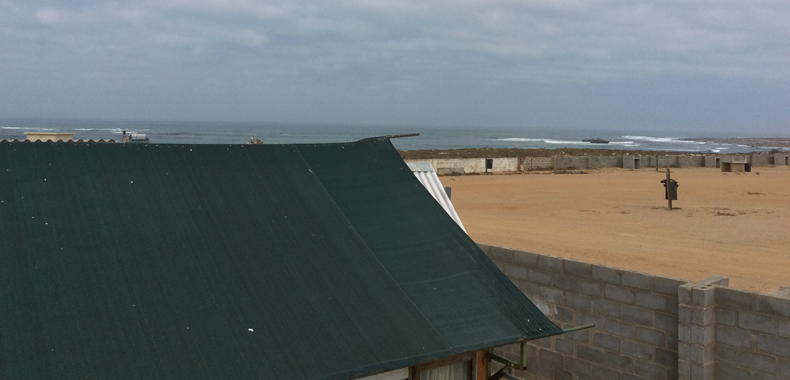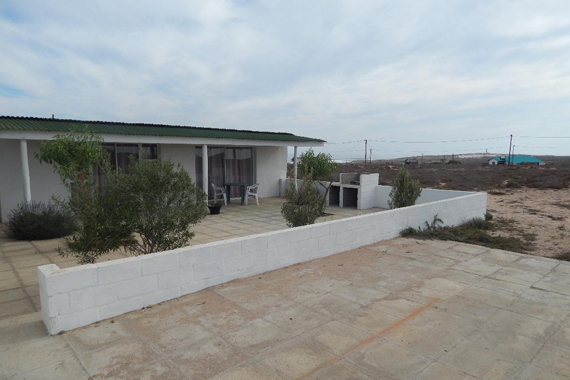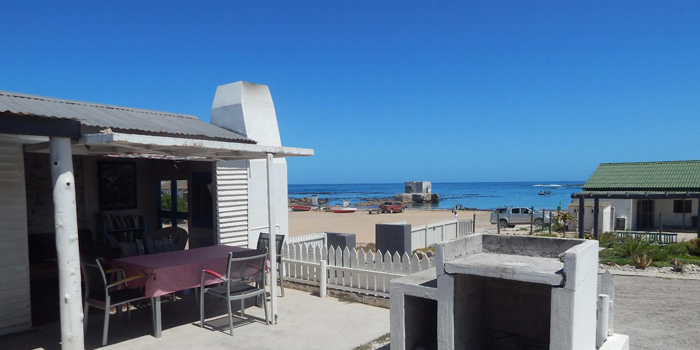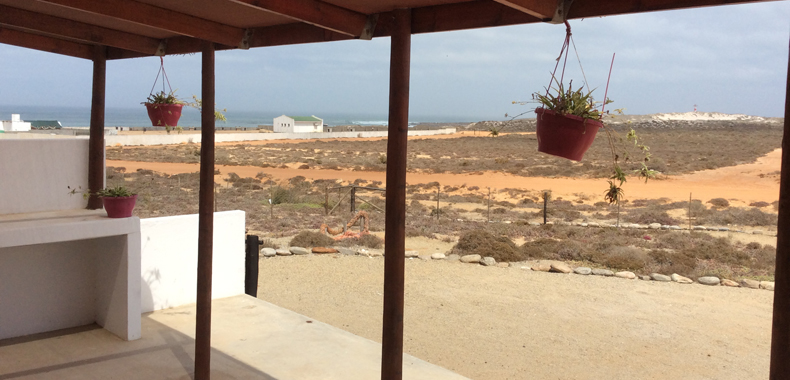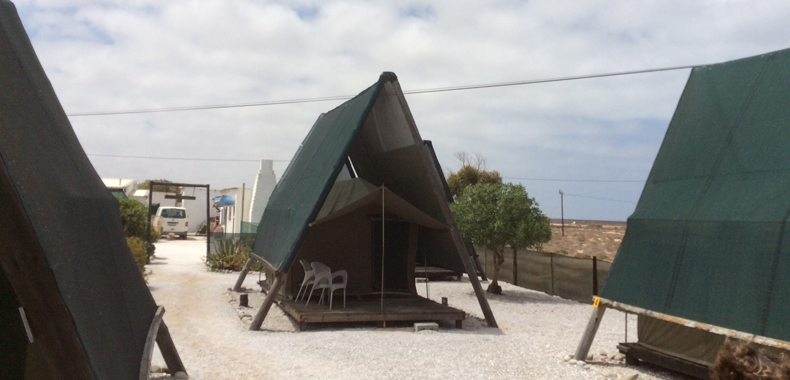History of Hondeklipbaai
The 19th Century

Governor of the Cape of Good Hope, Simon van der Stel, discovered the rich copper deposits of Namaqualand during 1685. Unable to find a suitable harbour from which to export the ore, 158 years passed
before, in 1843, revived interest in the rich copper fields of Namaqualand saw attempts to transport the copper ore by ox wagon or by boat from the mouth of the Orange River to the Cape of Good Hope.
These endeavours proved futile and pioneer miners became increasingly despondent. Providentially in 1846, Thomas Grace, a ship’s captain discovered a small natural harbour where he immediately established a trading station. A big gneiss rock resembling a dog inspired him to name the place “Hondeklip Bay”. The first Copper Mines commenced production between 1850 and 1852. On 31st August 1852 the Bosphorus
shipped the first eleven tons of copper ore from Hondeklip Bay directly to Wales.
Increased shipping to and from Cape Town also brought about better living conditions to the Namaqualanders who were quite unused to “luxuries” such as tea and sugar.
The Heydays of Hondeklip Bay
The need to have Hondeklip Bay declared as a magisterial district became apparent in several petitions addressed to the colonial secretary at the Cape of Good Hope. These petitions motivated the fact that the magistrate in Springbok was unable to exert control as far away as Hondeklip Bay as well as problems concerning the safeguarding of property and merchandise in the Bay. Thus Hondeklip Bay was declared as a separate magisterial district on 26 November 1862 and Arthur Richard Orpen was appointed as the resident magistrate. During 1865 a visitor to Namaqualand described the settlement along these lines:
“Hondeklip is a loose, straggling place on a low sandy beach. It appears from the sea larger than you would expect, and longer than it is. The houses are of one storey; but the huge stacks of copper ore and of fuel quite overtop them, rising to a height of thirty or forty feet, and of such odd shapes that the stranger is rather puzzled to know what they are. Five or six trading stores run parallel to a road which for a little distance is contiguous to the beach, and then curves off, and leaves room for a row of outhouses at one end, between it and the beach, for the use of the Company, and for the shops. The buildings mostly, if not entirely, belong to The Cape Copper Mining Company, and they occupy a considerable number as receiving stores. A rude sort of square or market place is formed in one part, on one side of which is situated the courthouse and customhouse, a building of one room, used also as a church. The residence of the Company's Superintendent is pleasantly situated on the rising ground a little south of the town, and leading up from the beach, as are also some cottages; the Magistrate, who is also the Collector of Customs, has his residence near the beach at the south end, and the goal is situated a little back from the shore, in the same direction.”

The copper ore was conveyed from the mines at O’kiep to Hondeklip Bay by means of ox wagons across the mountains and deep, sandy plains on roads that were almost non-existent. On the 6th of February 1867 work was commenced on the Messelpad (Masonry Road) and Wildepaardehoek (Feral Horse’s Corner). Prisoners were shipped from Cape Town to Hondeklip Bay from where they had to walk to the prison station at the Buffels River. Work on this road was discontinued by March 1871 when it was decided rather to develop Port Nolloth as the preferred harbour of export. The completion of the first section of The Cape Copper Mining Company's line of rail from Port Nolloth to Muishond, which was opened in 1871, brought about the rapid decline of Hondeklip Bay as a settlement - the Messelpad becoming defunct since it could be used for nothing else but the transport of copper ore. By 1870 shop keeping at Hondeklip Bay had become a thing of the past. While there were still about 200 inhabitants in 1873, by 1875, at which time there were 12 houses and 11 huts, the population had dwindled to 103. By June 1877 Hondeklip Bay ceased to be regarded as a separate magisterial district and a port. At this point there was apparently only one shopkeeper left. It continued to subsist as a small centre, shipping agricultural produce to Cape Town.
The 20th Century
Hondeklip Bay made a lingering advance into the 20th century when, in 1925, a Crayfish Factory was established. This used to be the mainstay of the local community, processing both lobster and white fish. However, the grounds became considerably fished out and in 1994 the factory was mothballed. The concession is currently trawled from Port Nolloth. Today the buildings are being utilised to run an experimental Abalone farming project. The crayfish factory was the only industry operating in Hondeklip Bay until diamond-mining operations started in 1970.
Even though the Cape Coast Exploration Company (later to be taken over by De Beers Consolidated Mining) bought out all diamond prospects to Hondeklip Bay in November 1927, no serious mining was undertaken until the 1980’s.
Unfortunately Trans Hex Mining Ltd. (affiliated to Remgro and the Rembrandt Group) shut down their operations in Hondeklip Bay on the 31st January 2003 after extensively excavating and producing thousands of carats of diamonds for almost 20 years. The farms Hondeklip and portions of the adjoining farm Avontuur are characterised by a series of large excavations and overburdened dumps. Many of these were created in the 70’s and are currently merely being made safe! Overburden dumps are only sloped to enhance stability and sustainability. Unfortunately, for the community of Hondeklip Bay, this is not much in the way of a bequest, as very slight development and growth have been left behind. The community can only trust that this company will do some responsible rehabilitation before they ultimately depart.
A major factor that has always been standing in the way of development in Hondeklip Bay is the scarcity of water. During 1998 a water pipeline was laid from the neighbouring town of Koingnaas to Hondeklip Bay. This was supposed to replace the old system of carting water by truck, but due to a misunderstanding between the Namaqualand Regional Council, the Department of Water Affairs and De Beers Consolidated Mining, almost 2 ½ years passed before the pipeline was officially operative in 2001. Although the water is limited in quantity and quality, a historic milestone had at last been achieved at the beginning of the 21st century!
